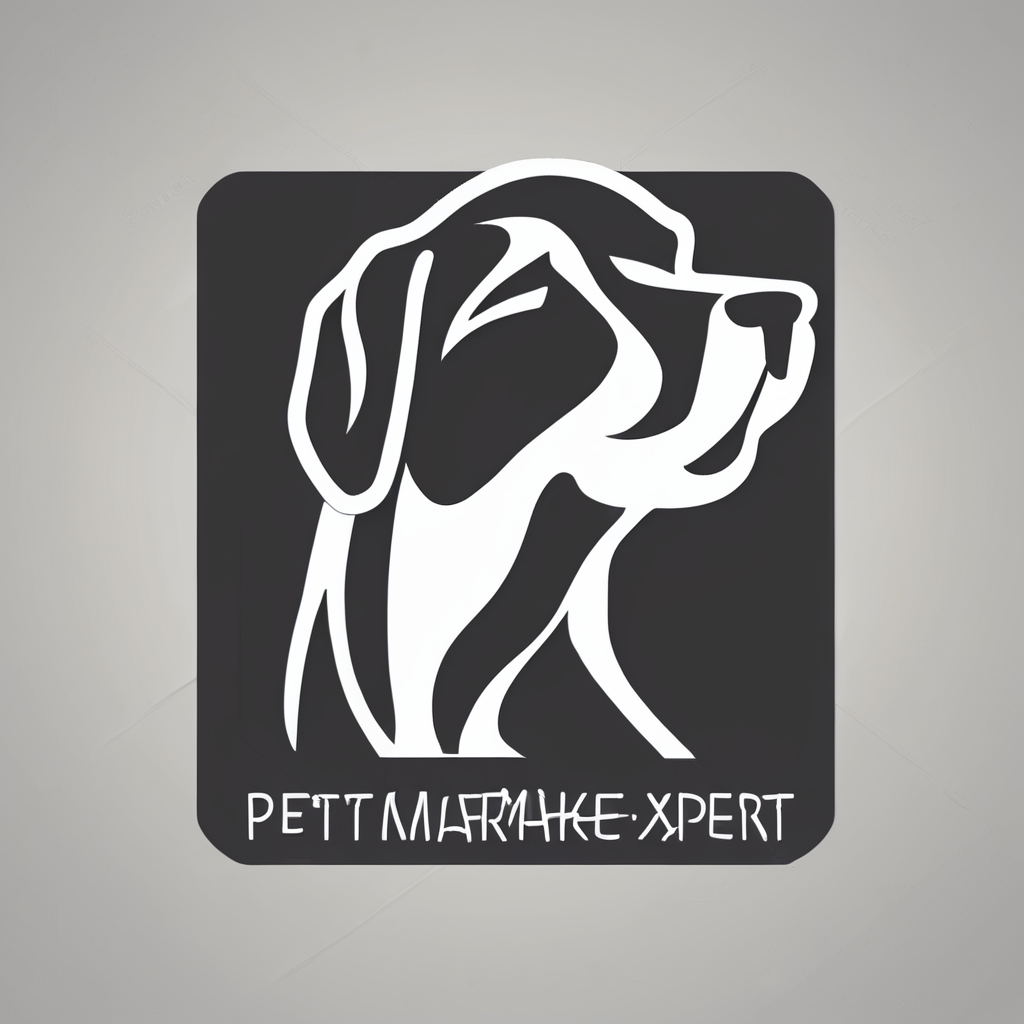Top Gentle Exercises for Senior Border Terriers with Arthritis: Keeping Your Pup Active and Happy!
As your Border Terrier ages, it’s essential to adapt their exercise routine to accommodate any health issues, particularly arthritis. Senior dogs, like any other aging pets, need gentle and tailored exercises to maintain their health, mobility, and mental well-being. Here’s a comprehensive guide on how to keep your senior Border Terrier active, happy, and pain-free.
Understanding the Needs of Senior Dogs with Arthritis
Before diving into the exercises, it’s crucial to understand the specific needs of senior dogs, especially those with arthritis. Arthritis can cause significant pain and reduce mobility, so any exercise program must be carefully planned and approved by your veterinarian.
In parallel : Mastering Tibetan Mastiff Territoriality: Strategies for Coexisting in a Multi-Dog Home
Consulting Your Veterinarian
“Before you begin any canine conditioning program, make sure your vet approves,” advises the American Kennel Club. This is particularly important for senior dogs with arthritis, as certain movements could exacerbate the condition[2].
Health Considerations
Senior dogs with arthritis need exercises that are low-impact and gentle on their joints. High-energy activities like long runs or jumps are out of the question. Instead, focus on exercises that promote flexibility, balance, and mental stimulation without putting undue stress on their joints.
Stretching Exercises for Flexibility
Stretching is a vital component of any dog exercise program, especially for senior dogs. It helps maintain flexibility, reduces stiffness, and can be a great way to warm up before and cool down after other activities.
Teaching Your Dog to Stretch
You can teach your dog to stretch on cue by capturing their natural behavior. For example, after a nap, your dog might naturally stretch. Use a clicker or a marker word to mark this behavior, then reward them with a treat. Over time, your dog will learn to stretch on command, which can be a valuable part of your daily exercise routine[2].
Figure Eights
Walking your dog in a figure-eight pattern around cones or other props is an excellent way to stretch their back and improve spinal flexibility. Start by placing two objects several feet apart and lead your dog around and through them using treats. As your dog becomes more comfortable, you can move the objects closer together to tighten the turn and increase the stretch[2].
Balance Exercises for Core Strength
Balance exercises are fantastic for building muscle and increasing body awareness in your senior dog. Here are a few exercises you can try:
Using Safe Props
Start with a steady surface like an upside-down shallow plastic storage bin. Teach your dog to place all four paws on the object. Once they are comfortable, you can introduce unsteady surfaces like large sofa cushions or an inflatable canine exercise disc. These exercises will help your dog work on their core strength and balance[2].
Step Stool Stroll
The “step stool stroll” is another great exercise for body awareness. Place your dog’s front paws on a step stool or a large book (for smaller dogs) and their back paws on the ground. Encourage them to walk around the stool while keeping their front paws elevated. This exercise helps your dog think about the placement of each paw and improves their overall balance and coordination[2].
Mental Stimulation and Games
Mental stimulation is just as important as physical exercise for senior dogs. Here are some games and activities that can help keep your dog’s mind active:
Puzzle Toys
Puzzle toys filled with treats are an excellent way to provide mental stimulation. These toys challenge your dog to figure out how to get the treats out, keeping them engaged and mentally active.
Gentle Fetch
While high-impact fetch might be out of the question, a gentle game of fetch can still be enjoyable for your senior dog. Use a soft ball or toy and keep the throws short and easy to catch.
Scent Work
Scent work is another great activity that doesn’t require much physical exertion but provides excellent mental stimulation. Hide treats or toys with a familiar scent and encourage your dog to find them.
Practical Tips and Precautions
Here are some practical tips and precautions to keep in mind when exercising your senior Border Terrier with arthritis:
Short and Frequent Sessions
“Shorter, more frequent walks or play sessions in a controlled environment are ideal,” suggests Darwin’s Pet Food. This approach helps avoid overexertion and keeps your dog comfortable[3].
Monitoring Pain
Always monitor your dog for signs of pain or discomfort during exercise. If you notice any limping, whining, or reluctance to move, stop the exercise immediately and consult with your veterinarian.
Maintaining a Healthy Weight
Keeping your dog at a healthy weight is crucial for managing arthritis. Excess weight can put additional stress on their joints, so ensure you’re feeding a balanced diet and monitoring their weight closely.
Detailed Exercise Plan
Here’s a detailed weekly exercise plan you can follow for your senior Border Terrier with arthritis:
Monday: Stretching Day
- Morning: Teach your dog to stretch on cue.
- Afternoon: Figure-eight walks around cones or props.
Tuesday: Balance Day
- Morning: Step stool stroll.
- Afternoon: Balance exercises using sofa cushions or an inflatable disc.
Wednesday: Mental Stimulation Day
- Morning: Puzzle toys filled with treats.
- Afternoon: Gentle game of fetch.
Thursday: Rest Day
Give your dog a day off to rest and recover.
Friday: Scent Work Day
- Morning: Hide treats or toys with a familiar scent.
- Afternoon: Encourage your dog to find the hidden items.
Saturday: Short Walks
- Morning and Afternoon: Short, gentle walks around the block.
Sunday: Rest Day
Another day off to rest and recover.
Table: Comparing Exercise Needs for Senior Dogs
| Exercise Type | Description | Benefits | Precautions |
|---|---|---|---|
| Stretching | Teaching your dog to stretch on cue, figure-eight walks | Maintains flexibility, reduces stiffness | Avoid overstretching, especially if your dog has severe arthritis |
| Balance Exercises | Using props like step stools, sofa cushions, or inflatable discs | Builds muscle, increases body awareness | Ensure the surface is safe and not too challenging |
| Mental Stimulation | Puzzle toys, gentle fetch, scent work | Provides mental stimulation, reduces boredom | Monitor for signs of frustration or overexertion |
| Short Walks | Short, gentle walks around the block | Maintains mobility, provides fresh air | Avoid long walks or high-impact activities |
Quotes and Insights
- “Dogs with conditions like hip dysplasia or arthritis may need specialized exercises or adjustments to avoid discomfort,” notes Puppy to Dog School. This highlights the importance of tailoring exercises to your dog’s specific health needs[4].
- “Canine athletes definitely gain an advantage from this type of conditioning, but senior dogs also need to stay limber,” advises the American Kennel Club. This underscores the universal benefits of conditioning exercises for dogs of all ages and health statuses[2].
Keeping your senior Border Terrier with arthritis active and happy requires a thoughtful and gentle approach to exercise. By incorporating stretching, balance exercises, and mental stimulation into their daily routine, you can help maintain their health, mobility, and mental well-being. Always consult with your veterinarian before starting any new exercise program, and be mindful of your dog’s comfort and pain levels.
With patience, care, and the right exercises, you can ensure your senior dog remains a happy and active companion for years to come. Remember, every small step counts, and even gentle exercises can make a significant difference in your dog’s quality of life.
Keeping Your Senior Border Terrier Mentally Stimulated
Even in their golden years, mental stimulation for dogs is essential, especially for senior Border Terriers. Incorporating cognitive activities for pets harmonises remarkably with physical exercise. These exercises not only retain a dog’s sharpness but also deliver joy and satisfaction, enriching their twilight phase.
Consider engaging your dog with interactive puzzle toys and games, which are particularly beneficial when managing ailments like arthritis. Such activities can be both therapeutic and amusing, ensuring your terrier remains agile without strenuous movement. Examples include treat-dispensing toys or snuffle mats, where your pup can explore different textures and scents. These activities tend to be kinder on older joints, offering a blend of excitement and gentle engagement.
Training sessions, even brief ones, are superb cognitive activities for pets and can be seamlessly integrated into their daily routines. They keep your dog attentive while revisiting basic commands or mastering new, simple tricks. Furthermore, incorporating socialisation into exercise regimens proves advantageous. Social interactions, whether with familiar humans or other dogs, enrich their life experiences and offer novel stimuli. By focusing on these varied aspects, your senior Border Terrier will enjoy a fulfilling, mentally stimulating lifestyle.
Resources and Tools for Dog Owners
Navigating the vast world of dog owner resources can be overwhelming, but it’s essential for those committed to enhancing their pet’s life. Begin with recommended books and websites that delve into canine health information. Notable titles include “The Dog Owner’s Home Veterinary Handbook” which covers a wide range of health topics, and sites like the American Kennel Club, offering well-researched articles.
Aside from literature, supportive materials for pet care can be found within community support groups. Online forums such as DogForum.com allow pet owners to share experiences and advice. Here, one can find peer support and practical tips for everyday challenges.
For those focusing on the well-being of senior dogs, tools for tracking exercise and health progress have proven beneficial. Apps like “Puppr” not only offer exercise routines but also track daily activities, making it easier to monitor your dog’s health over time. Additionally, FitBark attaches to collars, providing insights into your dog’s physical activity and sleep patterns. By integrating these resources, dog owners can ensure they are well-informed and equipped to provide the best care possible for their four-legged companions.
Understanding Arthritis in Senior Border Terriers
As Border Terriers age, the likelihood of developing arthritis increases, affecting their quality of life. Recognizing the signs of this disease in senior dogs is crucial for providing timely care.
Arthritis in dogs manifests through symptoms such as stiffness, limping, and reluctance to move. These signs often indicate underlying joint pain. You might notice your senior Border Terrier is less willing to climb stairs or jump onto furniture — a clear sign of discomfort. Their daily activities are significantly impacted, revealing how arthritis interferes with the simple joys of movement.
Pain recognition in pets is vital as it points to discomfort they cannot verbally express. Pay attention to changes in behaviour, such as irritability or avoidance of touch. Early detection and management of these signs are essential to maintain a senior dog’s mobility and overall well-being.
Arthritis not only limits physical activity but also affects the emotional health of dogs, leading to a reluctance to play or engage socially. To ensure a happier life for senior Border Terriers, fastidious observation and understanding of arthritis symptoms is crucial. Proper management and treatment can help alleviate pain and improve their daily experiences.
Benefits of Gentle Exercise for Arthritic Dogs
Gentle exercise plays a pivotal role in managing arthritis symptoms for dogs. Regular, low-impact activities help to maintain muscle strength and flexibility, which can significantly alleviate discomfort. Engaging in appropriate exercise could enhance a dog’s canine health, particularly by supporting joint health. Stronger muscles reduce the strain on joints, thus decreasing pain and stiffness associated with arthritis.
Mobility improvement is another substantial benefit, as exercise naturally promotes better range of motion. Over time, this can slow the progression of the condition by keeping the joints well-lubricated and functional. Owners might notice that even small improvements in mobility can greatly enhance their pet’s quality of life.
Moreover, exercise offers significant social and emotional advantages. Staying active helps to reduce negative emotions such as anxiety that could arise due to limited movement. As dogs participate in regular activities, they often display increased happiness and energy levels, which are reassuring signs for any pet owner.
Ensuring that dogs engage in suitable exercise not only aids their physical well-being but also boosts their morale, making them both happier and healthier.
Recommended Gentle Exercises for Senior Border Terriers
Finding suitable gentle exercises for your senior Border Terrier is crucial to maintaining their health and happiness. As dogs age, their exercise needs change, particularly if they have conditions like arthritis. Here are some senior dog activities tailored for your furry friend to keep them feeling their best.
Swimming
Swimming is an excellent low-impact, arthritis-friendly exercise. The buoyancy of the water reduces stress on joints, allowing your senior dog to enjoy physical activity without discomfort. If your puppy is unfamiliar with water, begin with shallow areas, encouraging play with toys. Pools and controlled environments are preferred to avoid unpredictable currents in open waters. Gradually increasing swim duration helps build strength while remaining gentle on joints.
Short Walks
For senior dogs, short walks are essential. These walks should be frequent but brief, avoiding strain on aging bodies. Choose routes with even terrain, where your dog can walk comfortably at its own pace. Shorter, more frequent walks help maintain their energy levels and provide regular mental stimulation.
Gentle Stretching
Introduce gentle stretching into your dog’s routine to enhance flexibility. Simple stretching techniques can keep muscles supple by focusing on areas like the neck and shoulders. Always approach stretching slowly, ensuring your dog is comfortable. This promotes relaxation and can aid their range of motion, helping them stay active.
Tips for Safely Engaging Your Dog in Exercise
Ensuring your dog’s safety during exercise is vital for their health. Understanding some basic safety tips can prevent injury, especially when dealing with senior dogs.
Begin by integrating a warm-up and cool-down routine. Much like humans, dogs benefit from preparing their muscles before exertion. Start with slow, gentle movements to increase blood flow and flexibility, thus reducing the risk of strain.
Always be vigilant in monitoring your dog’s response to exercise. Observe signs of fatigue or discomfort and adjust accordingly. Panting, limping, or lagging behind are indicators that it might be time for a break. Listening to these cues helps prevent over-exertion.
Adapting activities based on your dog’s energy levels is crucial in maintaining a healthy exercise routine. Some dogs, especially seniors, may require shorter sessions or lower-impact activities like gentle walks or swimming. Be mindful of their unique needs and adjust as necessary.
Precautions, such as choosing the right exercise environment, also enhance safety. Avoid extreme temperatures and harsh surfaces. These dog exercise precautions ensure each session is both enjoyable and secure, promoting well-being and longevity.
Additional Tips for Managing Arthritis in Dogs
Implementing effective arthritis management strategies is crucial for improving your dog’s quality of life. One key approach involves utilizing supplements for dogs. These may include glucosamine and chondroitin, known to support joint health by reducing inflammation and promoting cartilage repair. Omega-3 fatty acids also provide anti-inflammatory benefits, aiding in pain relief. It is essential to consult a veterinarian before starting any supplement regimen to ensure safety and efficacy.
Regular veterinary check-ups play a significant role in managing arthritis. Such appointments allow for monitoring your dog’s condition and adjusting treatment plans as needed. Vets can also recommend suitable medications or therapies that complement the use of supplements.
Creating a comfortable living environment is another vital aspect. This can involve providing soft bedding to ease joint pressure and installing ramps or non-slip surfaces to prevent strain from climbing stairs. Ensuring your dog maintains a healthy weight through proper diet and exercise can decrease joint stress, further aiding arthritis management.
By integrating these practices into your dog’s routine, you contribute to their overall well-being, fostering a happier and healthier life.











